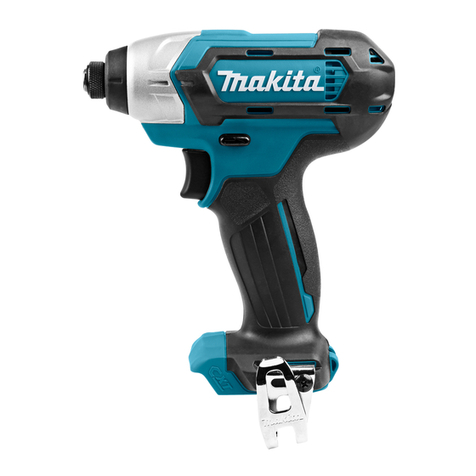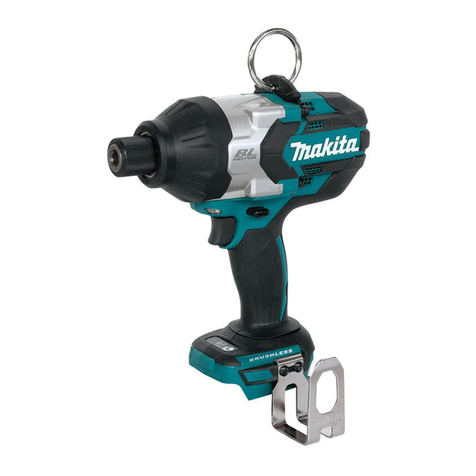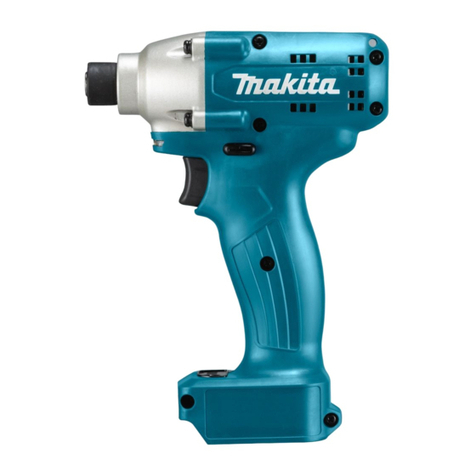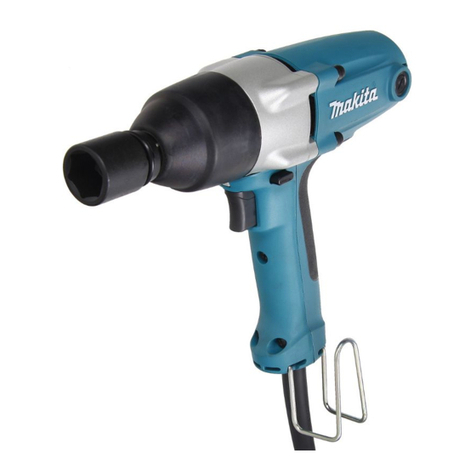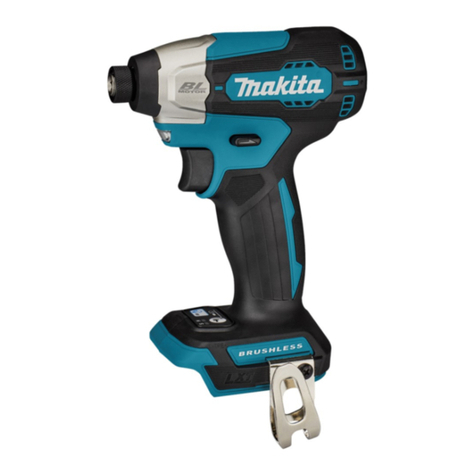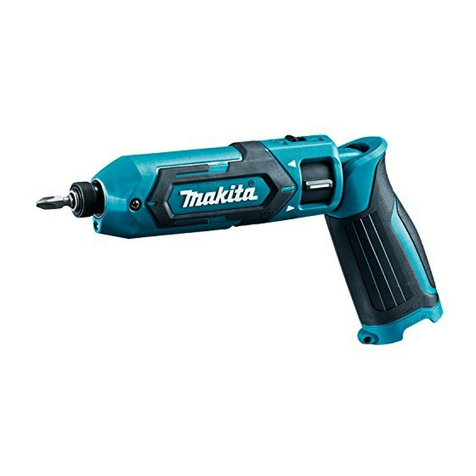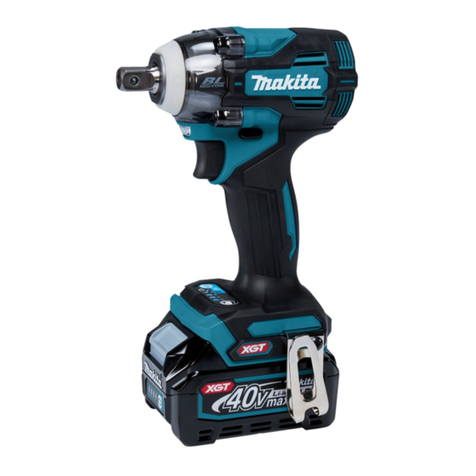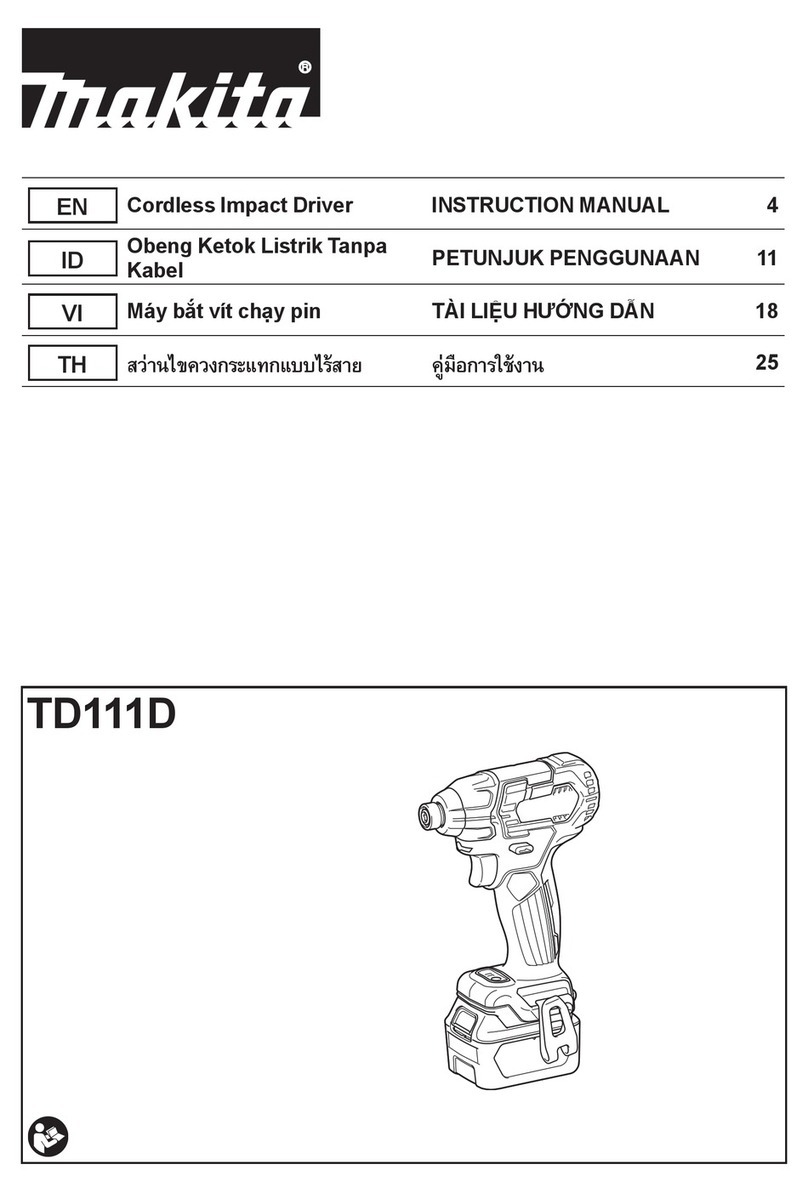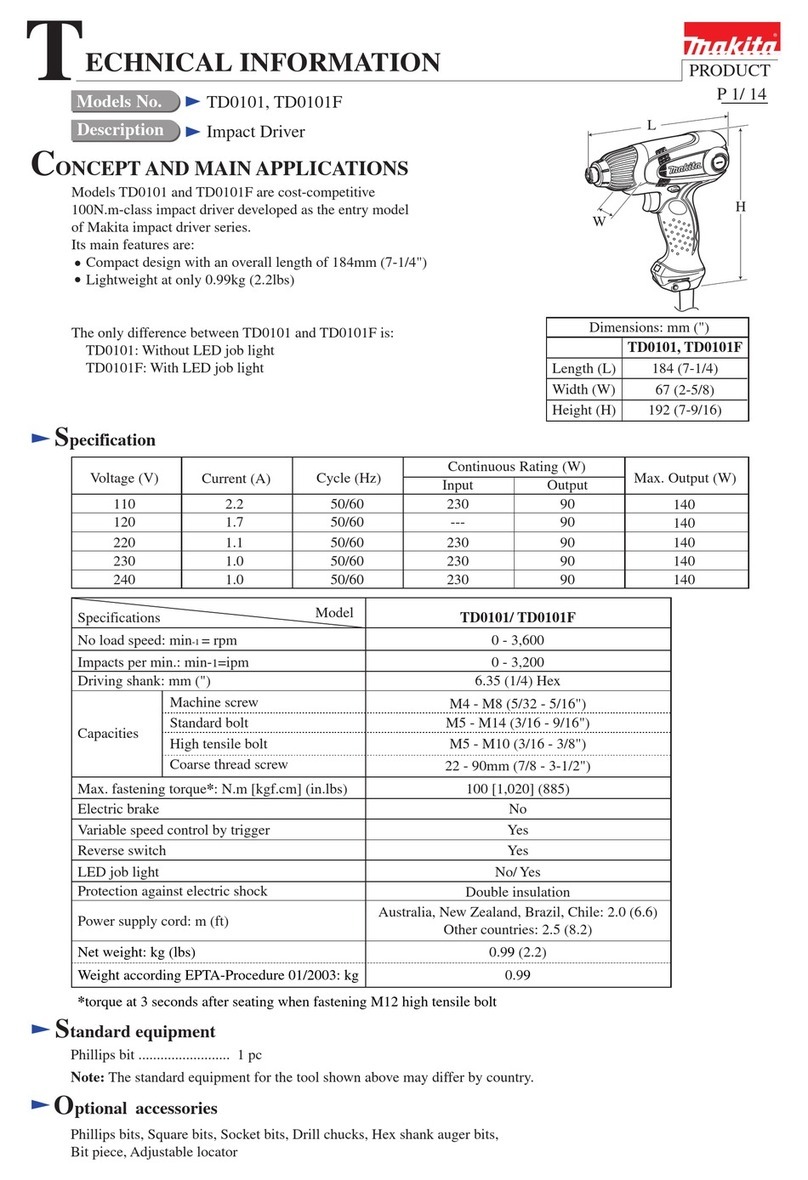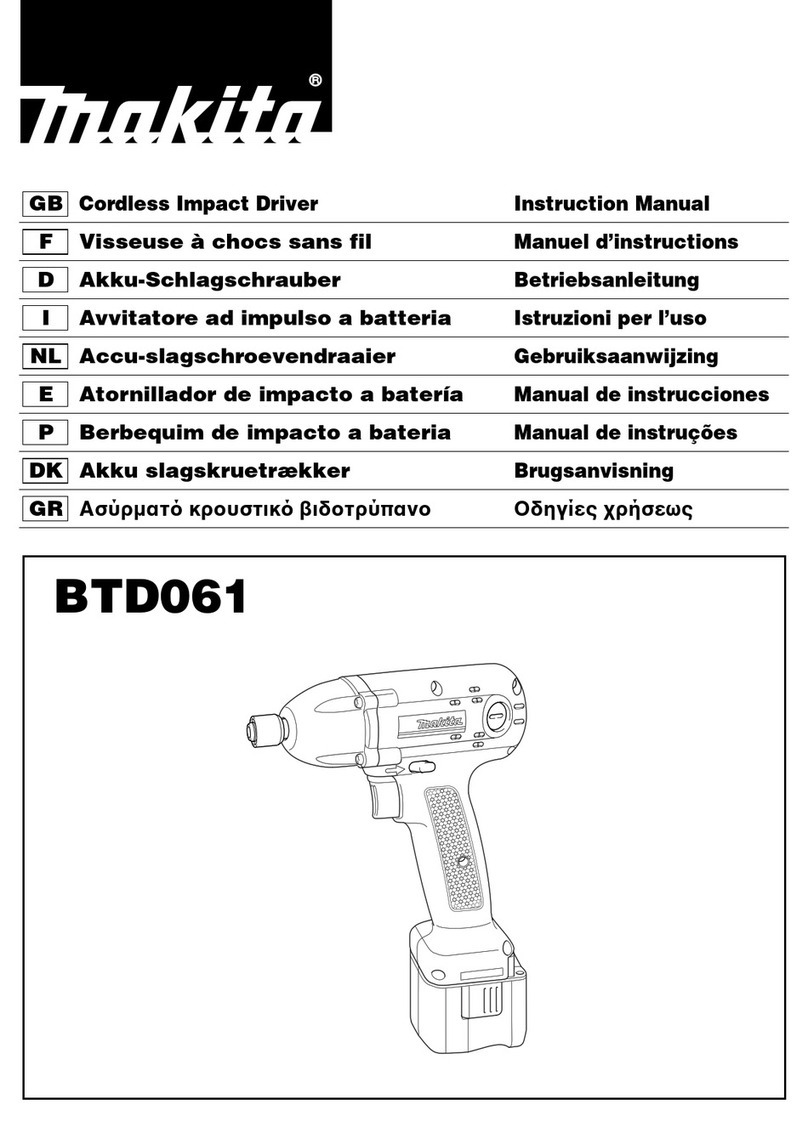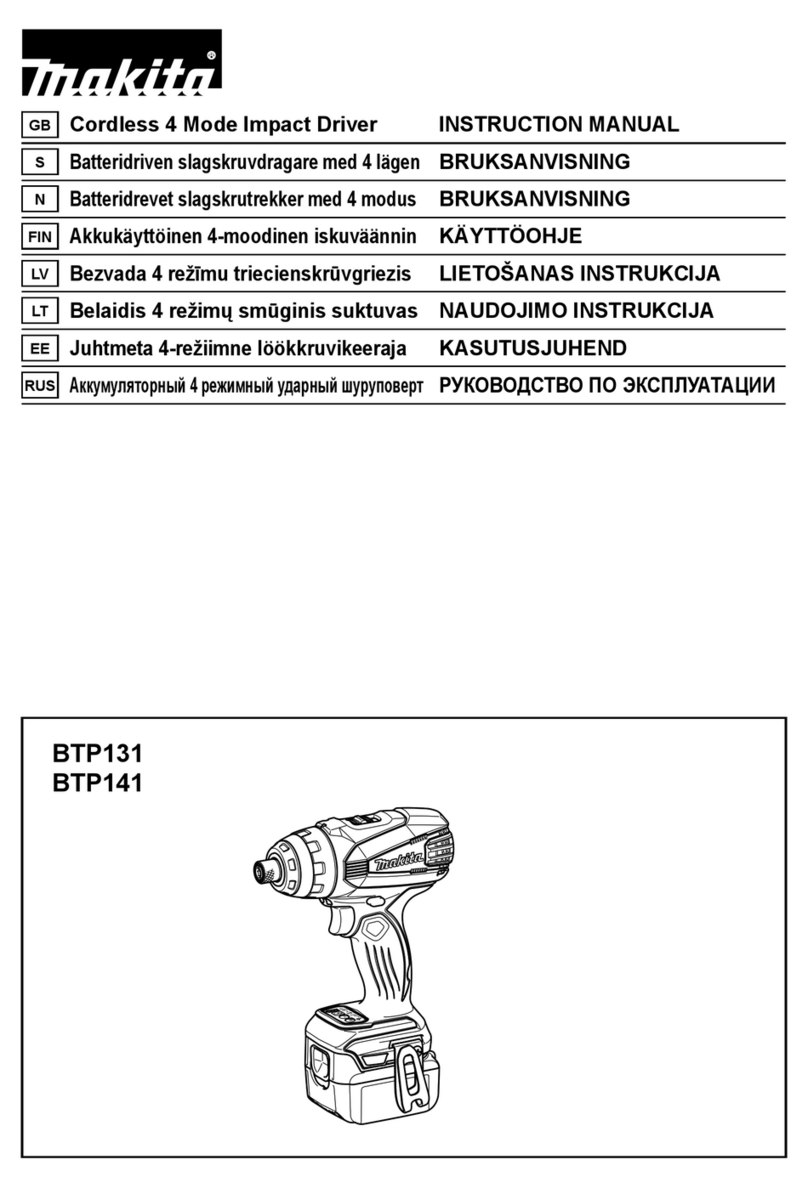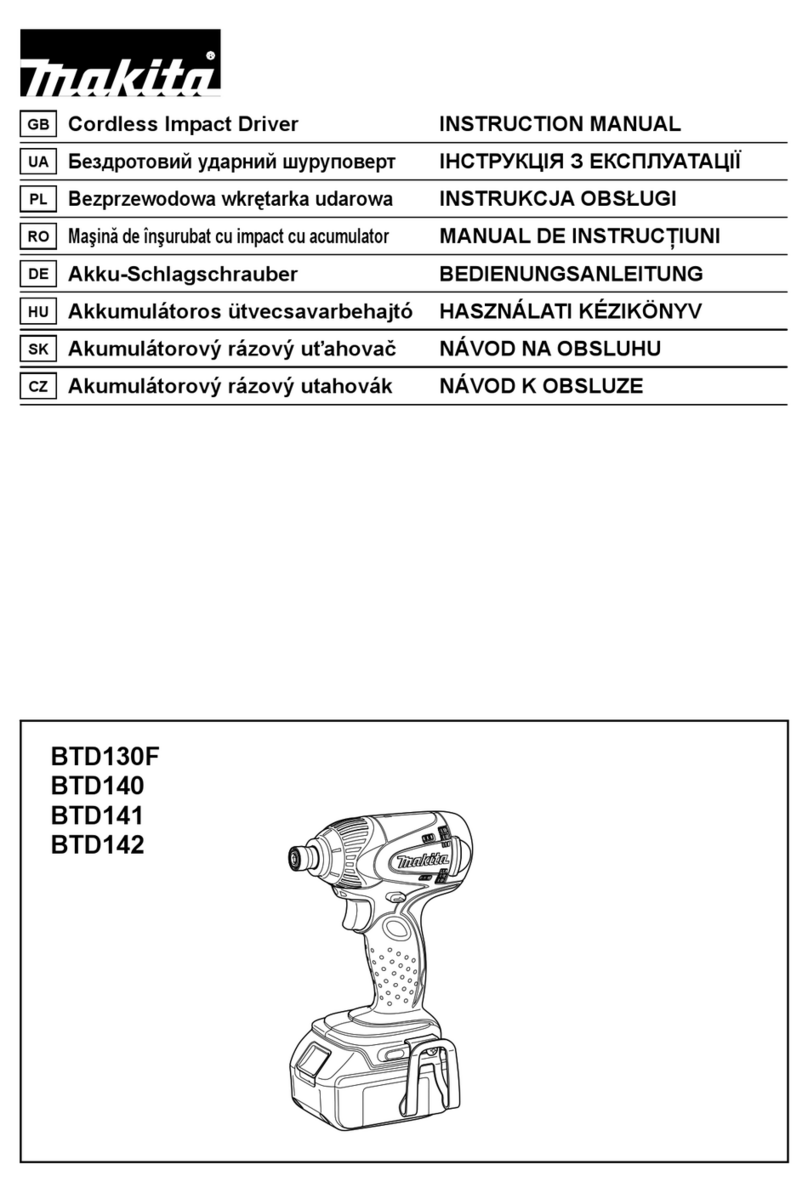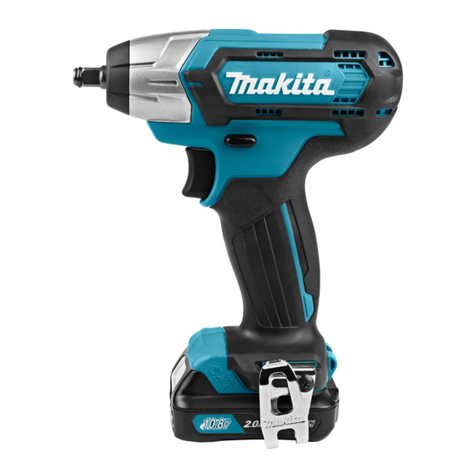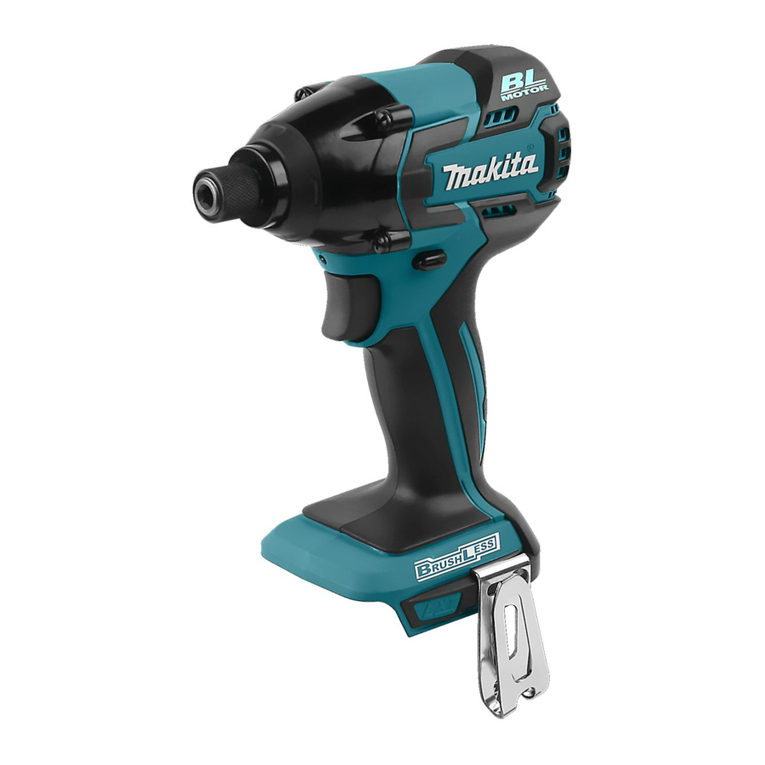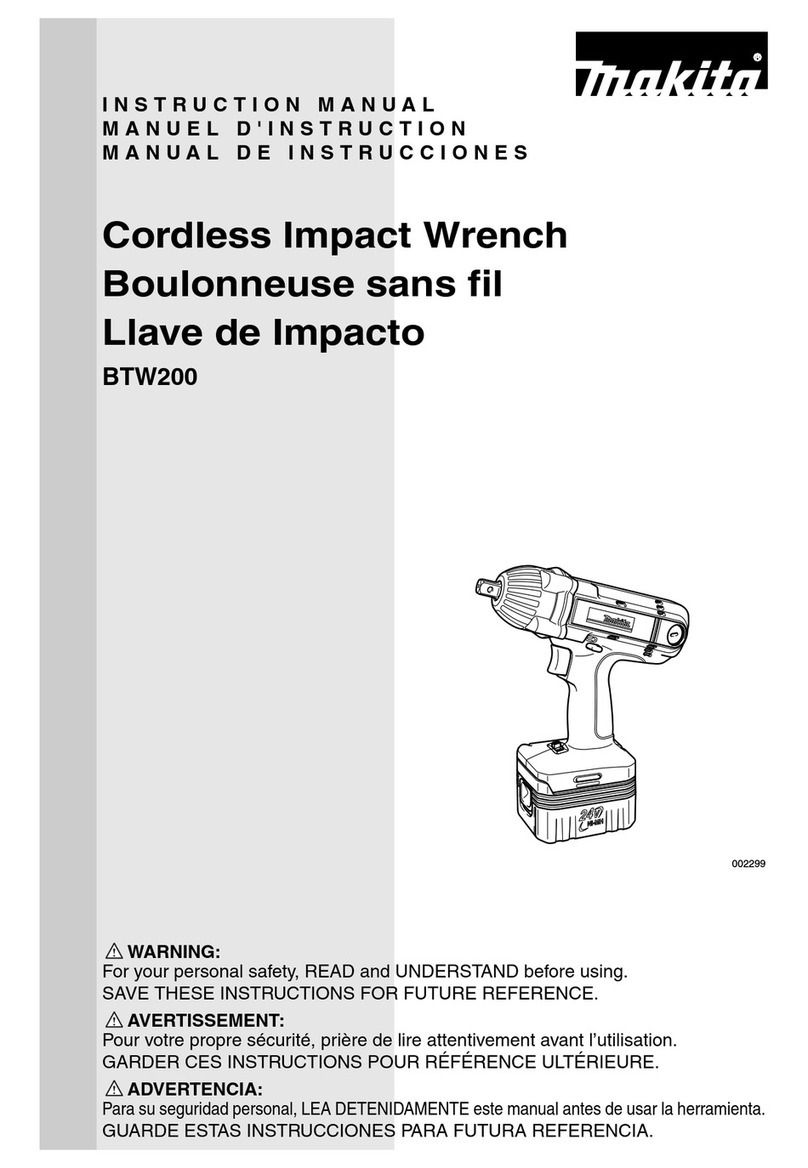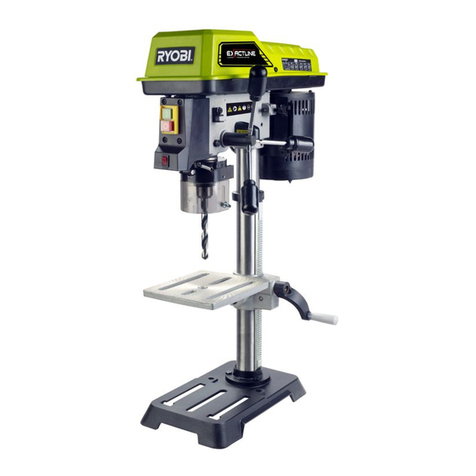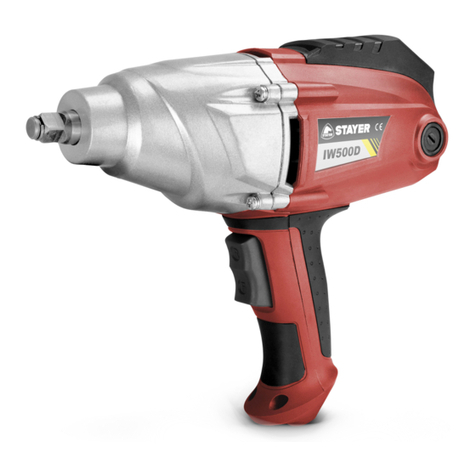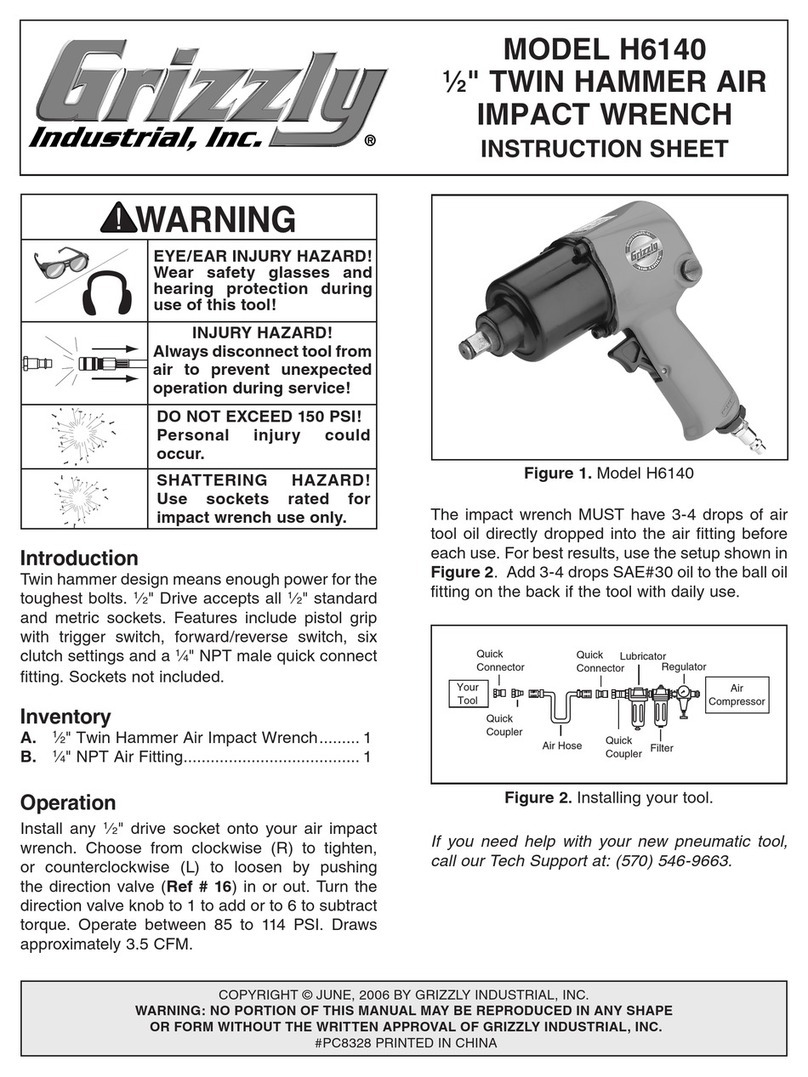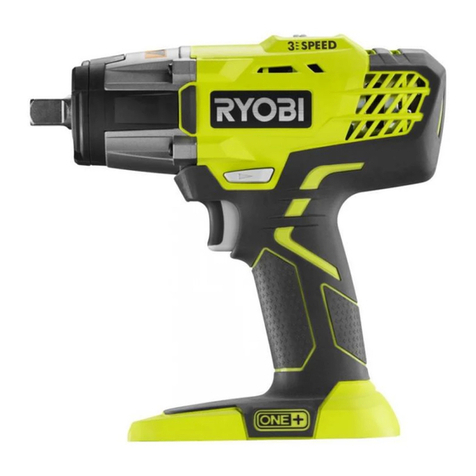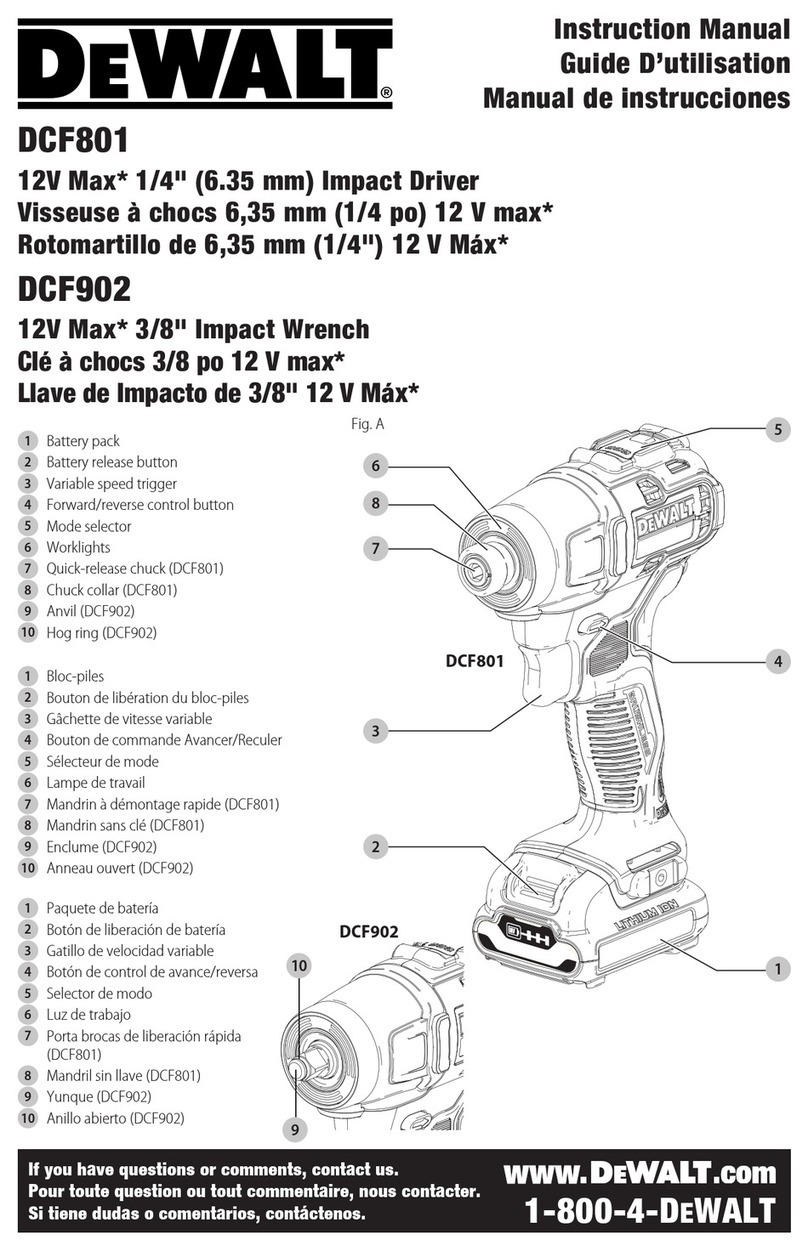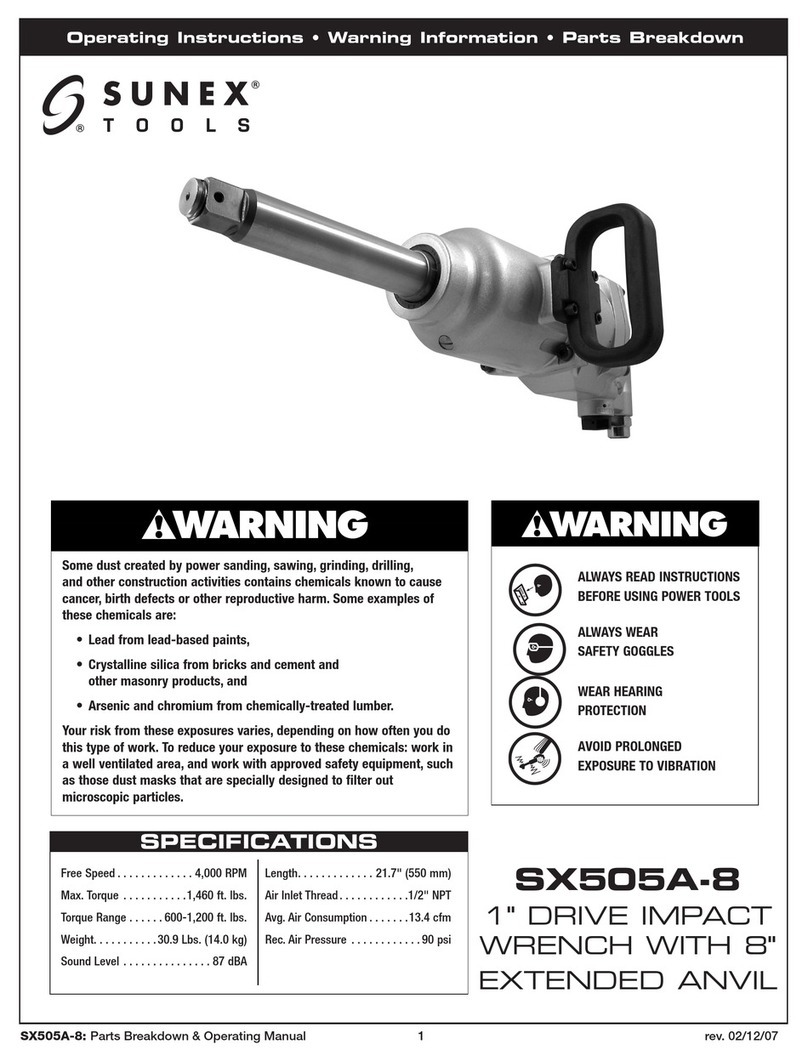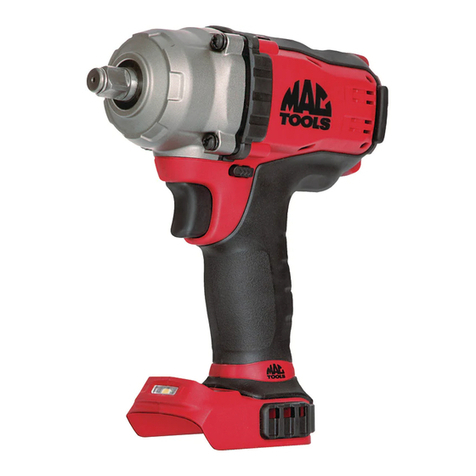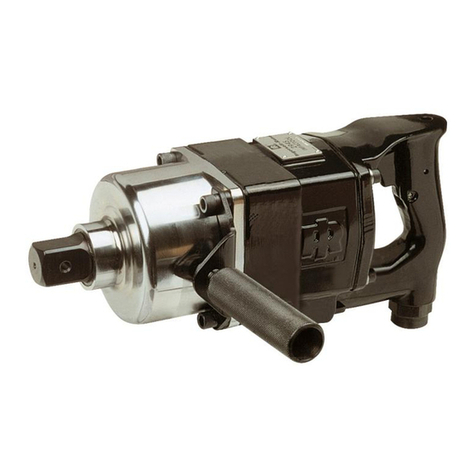CAUTION: Always switch off the tool before
installing or removing of the battery cartridge.
CAUTION: Hold the tool and the battery
cartridge firmly when installing or removing
battery cartridge. Failure to hold the tool and the
battery cartridge firmly may cause
them to slip off
your hands and result in
damage to the tool and battery cartridge and a
personal injury.
►Fig.1: 1. Red indicator 2. Button 3. Battery
cartridge
To remove the battery cartridge, slide it from the tool
while sliding the button on the front of the cartridge.
To install the battery cartridge, align the tongue on the
battery cartridge with the groove in the housing and slip
it into place. Insert it all the way until it locks in place
with a little click. If you can see the red indicator on the
upper side of the button, it is not locked completely.
Tool / battery protection system
The tool is equipped with
a tool/batteryprotection system. This system
automatically cuts off power to the motor to extend tool
and battery life. The tool will automatically stop during
operation if the tool or battery is placed under
one of the following
conditions:
Overload protection
When the battery is operated
in a manner that causes
it to draw an abnormally high current, the tool
automatically stops without any indication. In this
situation, turn the tool off and stop the application that
caused the tool to become overloaded. Then turn the
tool on to restart.
Overheat protection
When the battery is
overheated, the tool stops
automatically. In this situation, let the battery cool
before turning the tool on again.
Overdischarge protection
When the battery capacity is
not enough, the tool stops
automatically. In this case, remove the battery from the
tool and charge the battery.
NOTE: Overload protection will work only with
batteries with star marking.
►Fig.2: 1. Star marking
Indicating the remaining battery
capacity
►Fig.3: 1. Battery indicator
When you pull the switch
trigger, the LED display shows
the remaining battery capacity. The remaining battery
capacity is shown as the following table.
NOTE: When the LED display
goes off, the tool
is turned off to save the battery
power. To check the remaining battery capacity,
slightly pull the switch trigger.
NOTE: The LED display goes
off approximately one
minute after releasing the switch trigger.
NOTE: When the LED display
lights up and the
tool stops even with a recharged
battery cartridge, cool down the tool fully. If the status
will not change, stop using and have the tool repaired
by a Makita local service center.
NOTE: When the tool is
overheated, the light
blinks for one minute as shown in the
table below, and then the LED display
goes off. In this
case, cool down the
tool before operating again.

